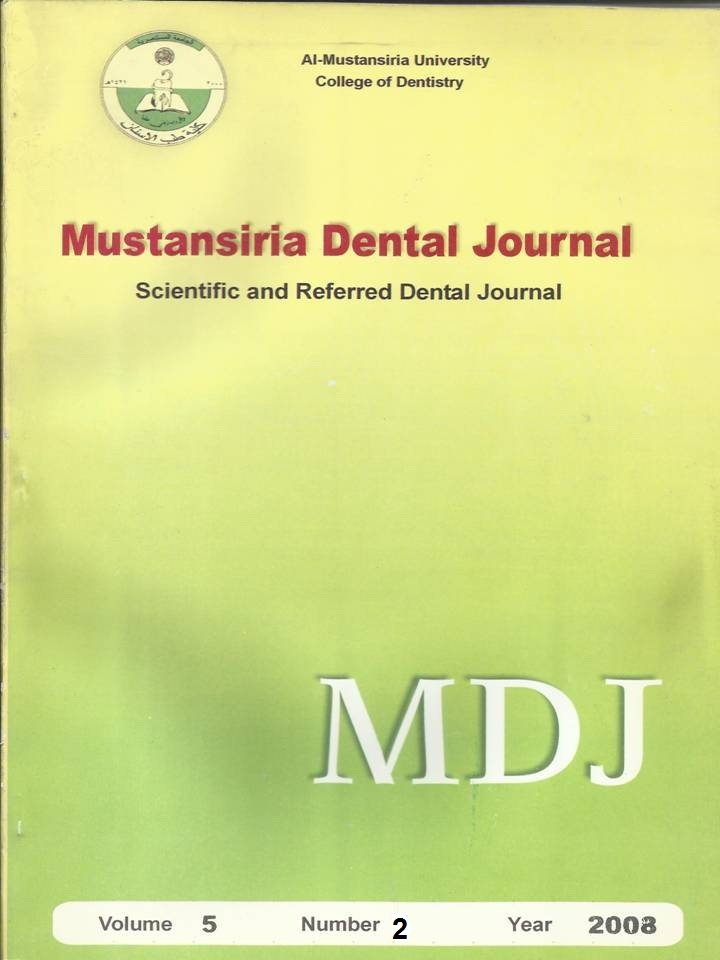Craniofacial morphology of Patient with Operated Unilateral cleft Lip and Palate (A cephalometric study)
DOI:
https://doi.org/10.32828/mdj.v5i2.524Keywords:
Keywords: unilateral cleft and palate, craniofacial morphology, skeletal cephalometric analysisAbstract
Background:Growth disorders associated with inborn defects, injuries or surgeries can restrict the development of the palatoalveolar complex and initiate the development of jaw and orthodontic anomalies
Aim of the study: to assess the skeletal craniofacial morphology of patients with operated unilateral cleft lip and palate
Materials and Methods: lateral cephalometric radiographs were taken for 20 adult of Iraqi operated unilateral cleft lip and palate patients. Twelve angular measurements and seven linear measurements were compared with control group selected on the bases of satisfactory facial esthetic matching with age.
Results: A significant differences were observed between cleft patients and non cleft individuals in that, cleft patients have smaller mean value mandibular angular measurements max-mand angle, N-S-GN angle with short body length while the maxilla demonstrates a retrusive position and results in the concave profile appeared by increase N-A-Pog angle at p<0.05, there is a definite decrease in overall mid facial growth especially in sagittal plane, while the lower anterior facial height shows an increase in length with significantly smaller mean value.
Conclusion: that cleft patients have a craniofacial morphology characterized by retruded maxillomandibule complex with a concave profile, when superimposed on that of control group, and smaller anterior cranial length together with shorter mandibular body result in relatively normal spatial mandiblular position through normal S-N-B angle.
Downloads
Published
Issue
Section
License
The Journal of Mustansiria Dental Journal is an open-access journal that all contents are free of charge. Articles of this journal are licensed under the terms of the Creative Commons Attribution International Public License CC-BY 4.0 (https://creativecommons.org/licenses/by/4.0/legalcode) that licensees are unrestrictly allowed to search, download, share, distribute, print, or link to the full texts of the articles, crawl them for indexing and reproduce any medium of the articles provided that they give the author(s) proper credits (citation). The journal allows the author(s) to retain the copyright of their published article.
Creative Commons-Attribution (BY)









